Hawelti and Melazo - two Ethio-Sabaean sites in the Tigray region, Ethiopia
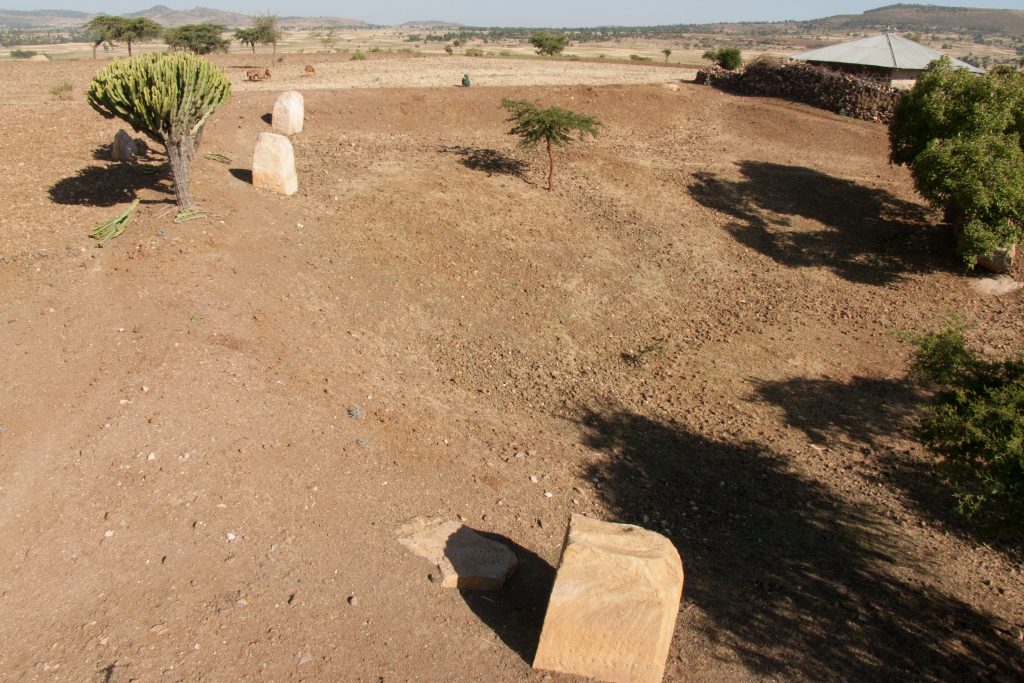
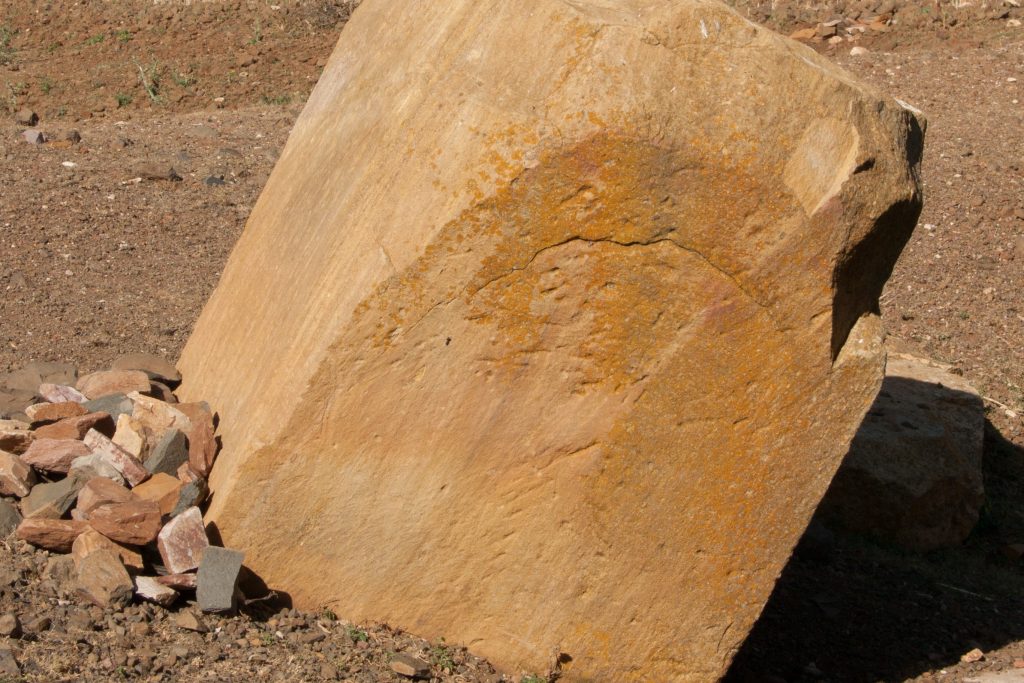
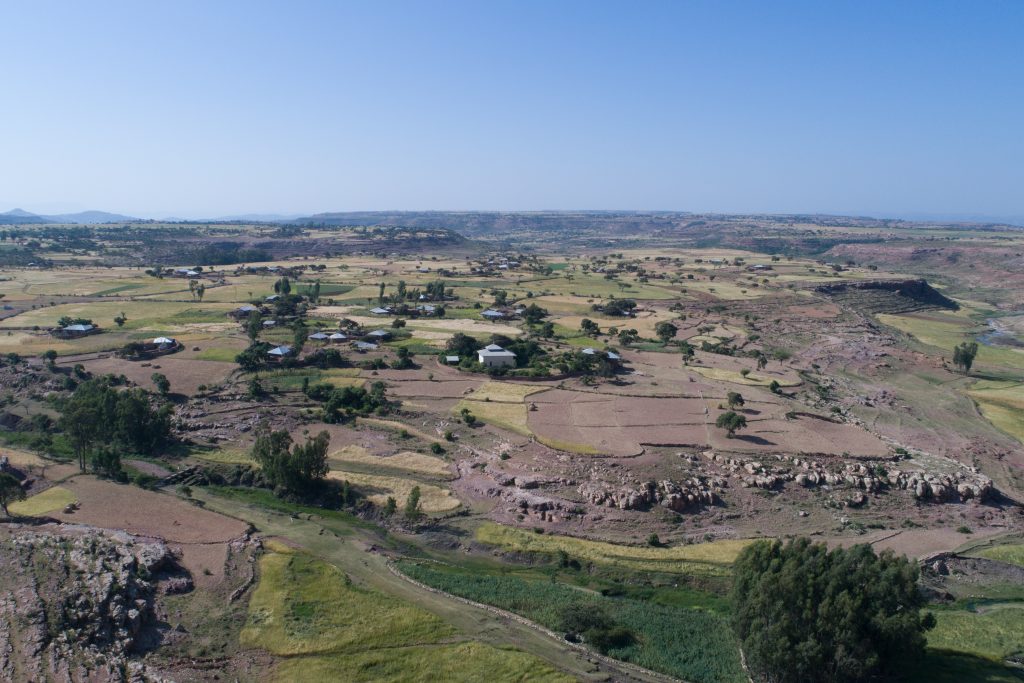
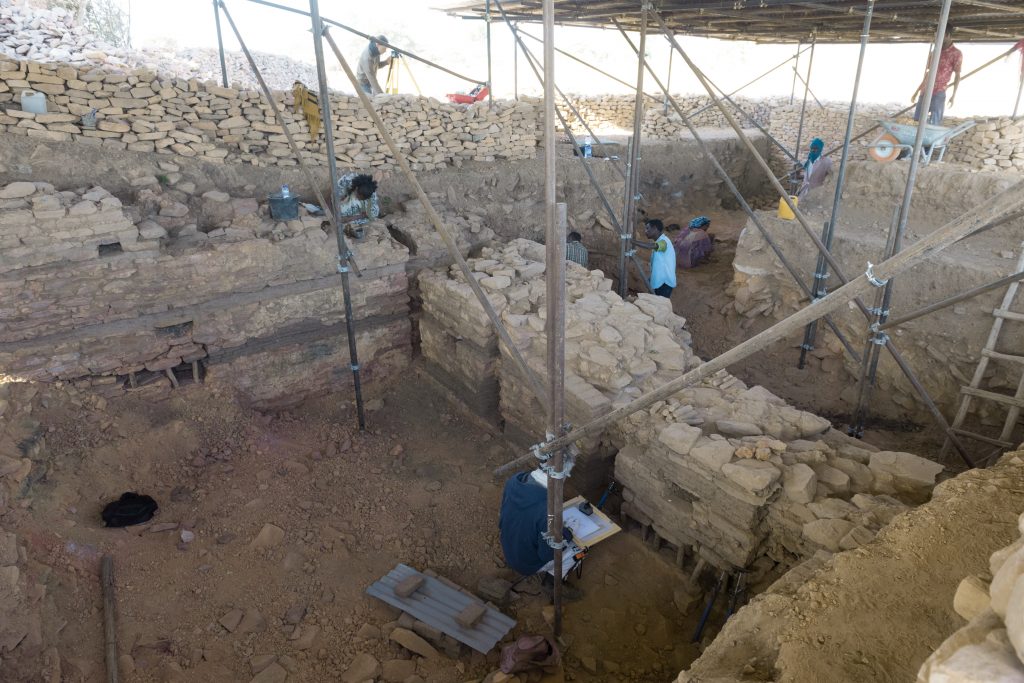
Apart from Yeha and Wuqro, the archaeological sites of Hawelti and Melazo, situated 10 km southeast of Aksum, testify to the cultural change occurring during the early 1st millennium BC that was induced by the migration of South Arabian groups to this region.
The land was used for agriculture and is characterised geographically by a number of elevations which are transected by rivers. One of the hills is dominated by a field of stelae, which also gives the site its name: Hawelti means stelae (fig. 1). Since 2009 the Sanaa Branch has been conducting research in this region as part of an Ethiopian-German cooperation project, thus continuing the excavations begun in the 1950s by the Ethiopian Archaeological Institute.
The 21 known rectangular stelae fragments are not pillars of one building, but rather cult monuments, which have different dimensions and traces of processing. They are not related architecturally, even though most of the monuments visible today are grouped more or less regularly around a depression. Originally they were up to 10 m high and weighed up to 30 tons (fig. 2). Some of the stelae featured the rest of inscriptions written in the Old South Arabian script.- In contrast to the well-known stelae of Aksum, the stelae of Hawelti did not mark graves. However, a cultic-ritual use seems plausible and was probably connected with the Ethio-Sabaean dominion.
In the immediate vicinity there were two buildings that no longer exist today; they were interpreted by the excavators of the time as temples and numerous objects were found in their surroundings. Particularly noteworthy are two seated female statues and a throne decorated with reliefs, which are now in the National Museum in Addis Ababa. In a neighbouring pit, earlier excavations revealed anthropomorphic and zoomorphic figurines as well as clay house models, bronze tools and -implements, jewellery and clay vessels, which were all probably votive offerings.
About 1.5 km southeast of Hawelti, on the other side of a river valley, lies the plateau of Melazo (fig. 3). Earlier excavations brought to light several buildings from the Ethio-Sabaean and Aksumite periods, as well as blocks with inscriptions and objects such as altars and incense burners.
Recent excavations have uncovered another monumental building from the first half of the 1st millennium BC (fig. 4), which is similar to the palace in Yeha in that it was constructed with rubble stones laid with mud-mortar and wooden beams. Although the total size is still unknown, it seems to have had similar dimensions. This monumental building presumably served as a palace or an administrative building.
Extensive surveys have revealed over 70 other sites so far. The finds range from pottery sherds to building remains and mainly date to the Ethio-Sabaean and Aksumite periods. They suggest a rather loose and probably rural settlement around the representative buildings and the stelae field.
Members
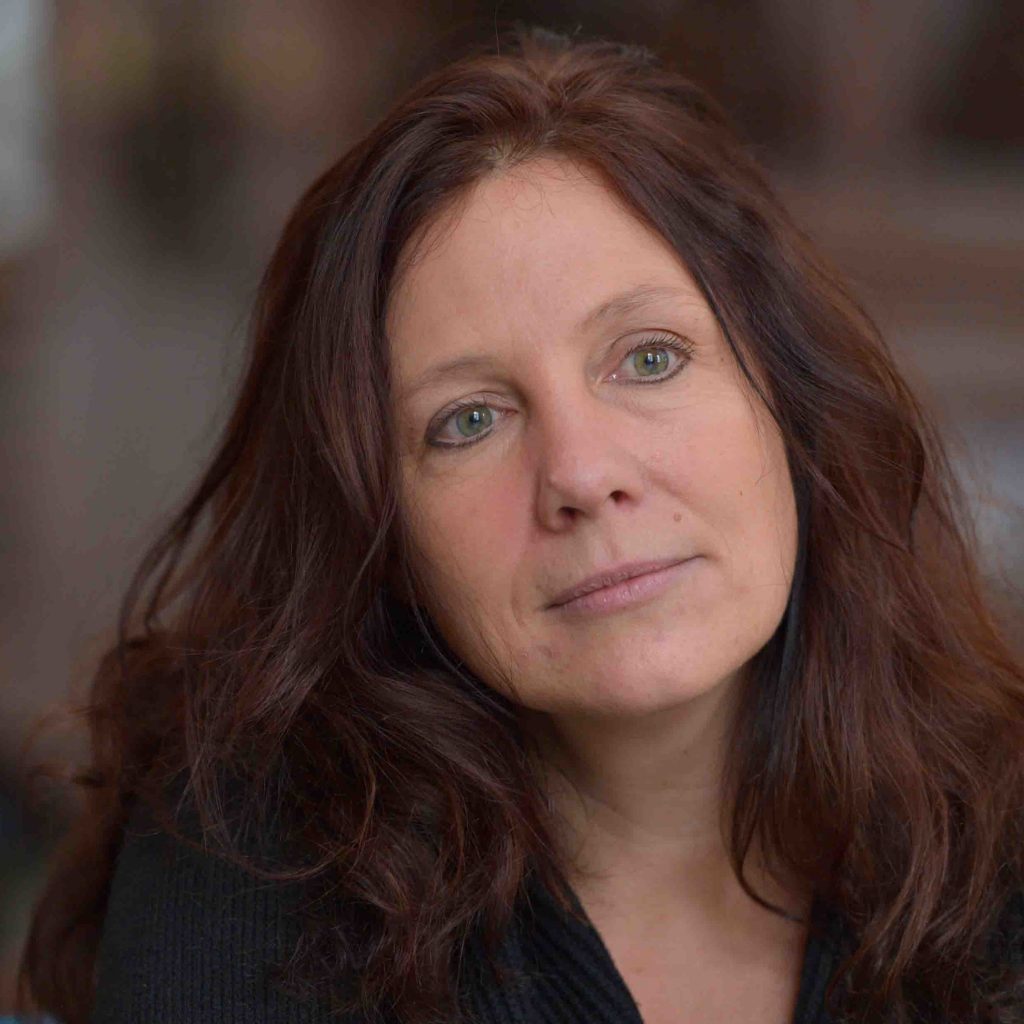
Dr. Iris Gerlach
DAI Oriental Department | Sanaa Branch
iris.gerlach@dainst.de

Prof. Dr. Norbert Nebes
Friedrich-Schiller-University Jena | Semitic Philology and Islamic Studies
norbert.nebes@uni-jena.de
Cooperation Partners

Dipl.-Ing. Maren Lindstaedt
HCU Hamburg | Geodesy and geoinformatics
maren.lindstaedt@hcu-hamburg.de

Dipl.-Ing. Klaus Mechelke
HCU Hamburg | Geodesy and geoinformatics
klaus.mechelke@hcu-hamburg

Prof. Dr. Joris Peters
Ludwig-Maximilians-University München
joris.peters@palaeo.vetmed.uni-muenchen.de
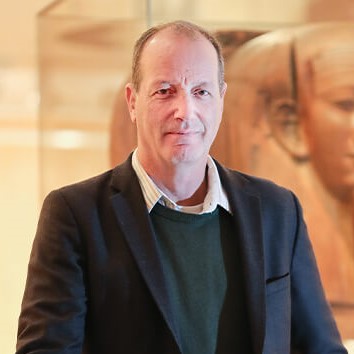
PD Dr. Dietrich Raue
Karl-Marx-University Leipzig | Egyptian Museum – Georg Steindorff
dietrich.raue@uni-leipzig.de
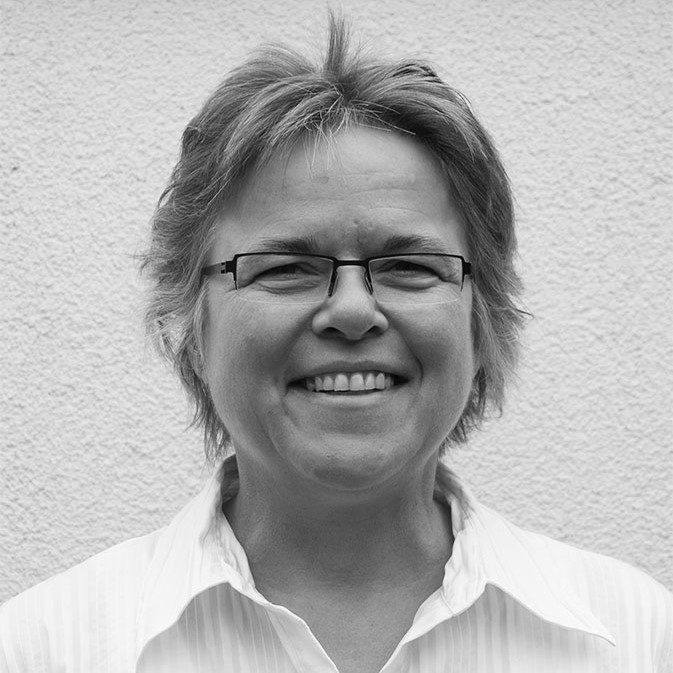
Prof. Dr.-Ing. Thekla Schulz-Brize
TU Berlin | Historical Architecture and Monument Preservation
thekla.schulz-brize@tu-berlin.de

Dr. Christian Weiß
Eberhard-Karls-University Tübingen | Geological Survey and Consulting Tübingen
christianweiss@posteo.de
Project Partners

Dr. Mulugeta Fisseha
Authority for Research and Conservation of Cultural Heritage (ARCCH) Ethiopia
mulugetafyg@gmail.com

Birkti Gebremedhin
Tigrai Culture and Tourism Bureau (TCTB) Ethiopia
gbirkti@gmail.com

Negassi Awetehey
Aksum University | Department of archaeology and heritage management
negasiawetehey@gmail.com
Figure Captions
Fig. 1 View over the stelae field of Hawelti [DAI Oriental Department, photo by M. Schnelle].
Fig. 2 Detail of a pillar-like stele from Hawelti [DAI Oriental Department, photo by M. Schnelle].
Fig. 3 View to the south over the plateau of Melazo [DAI Orient Department, photo by Th. Menn].
Fig. 4 View into the wood-stone building in Melazo during the excavation and restoration work.
[DAI Oriental Department, photo by I. Wagner].